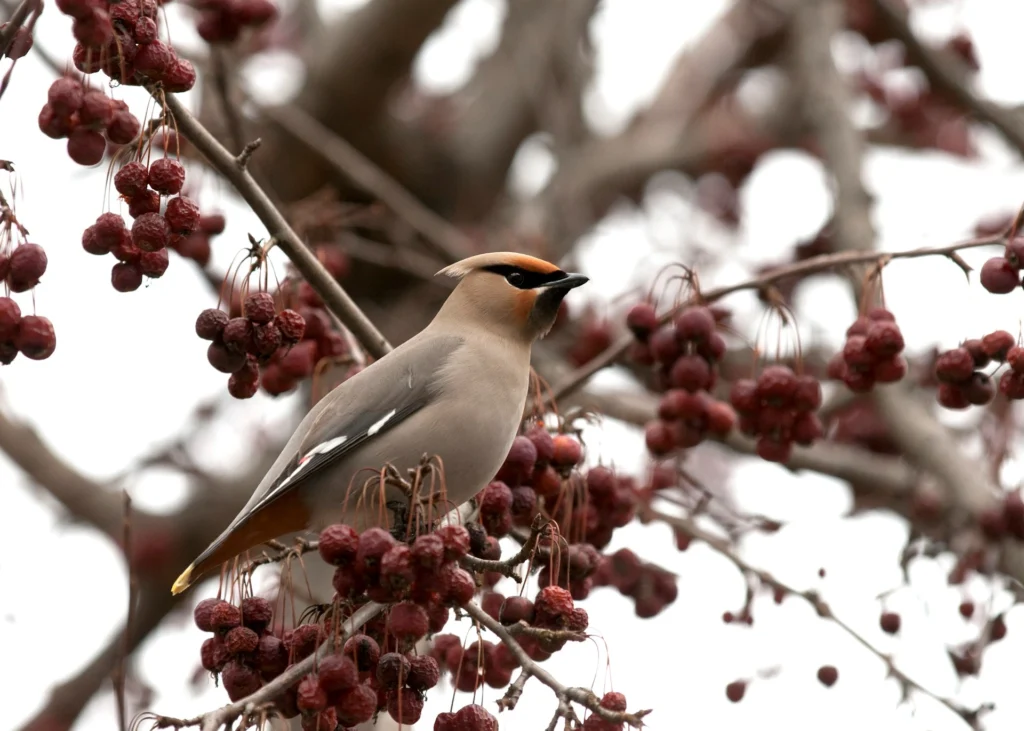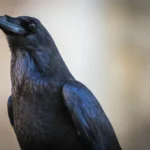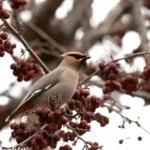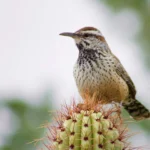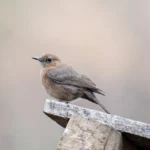With their bright red plumage and striking crests, Northern Cardinals are among the most recognizable backyard birds in North America. But if you’ve ever spotted a bird that looks like a cardinal but isn’t quite right—maybe it’s missing the red, has a different beak shape, or behaves differently—you’re not alone. Many birds that look like cardinals share similar traits, from shape and size to coloration and song.
In this guide, we’ll explore fascinating bird species that resemble cardinals in one way or another—whether in appearance, behavior, or habitat. These cardinal look-alikes range from red-crested songbirds to muted-toned imitators. Some may even surprise you! Let’s dive into the feathered world of cardinal doppelgängers.
Table of Contents
Pyrrhuloxia (Desert Cardinal)
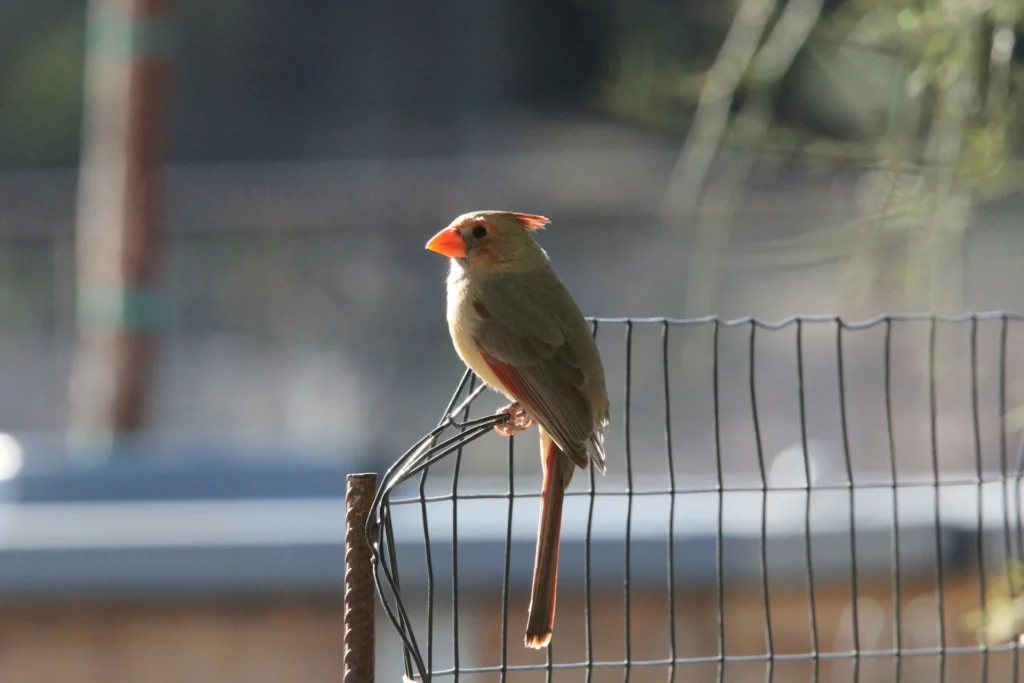
Appearance
The Pyrrhuloxia is often called the “Desert Cardinal” for good reason—it looks like a Northern Cardinal in a dusty disguise. Males have a red face, crest, and breast, but their overall body is more grey than red. Females are mostly grayish with subtle red highlights on the wings and crest. Both sexes share the distinctive high crest and stout, parrot-like yellowish bill.
Habitat
Pyrrhuloxias are native to the arid regions of the American Southwest and northern Mexico. You’ll often find them in desert scrub, mesquite thickets, and dry woodlands, especially in Texas, Arizona, and New Mexico.
Diet
Their diet includes seeds, berries, and insects. Like their Northern cousins, they forage on the ground and in low shrubs. They’re particularly fond of sunflower seeds and cactus fruit in the wild.
Behavior
Pyrrhuloxias behave similarly to cardinals—perching high to sing, defending territory, and appearing at feeders. During the breeding season, males sing loudly and frequently. Outside of breeding, they often join mixed-species flocks for safety.
Song
Their call is a crisp, metallic “cheep” and their song is a series of whistled notes that resemble a more muted version of the Northern Cardinal’s song. It’s less melodic but still pleasant.
Nesting
They build small, cup-shaped nests in thorny shrubs or low trees. Females lay 2–4 eggs and do most of the incubating while the male keeps watch nearby.
Conservation
Pyrrhuloxias are stable in population and not currently under threat. They benefit from desert conservation efforts and adapt well to backyard feeders in desert-edge suburbs.
Also Read : Birds That Look Like Blue Jays: 9 Striking Look-Alikes for Curious Birders
Vermilion Flycatcher
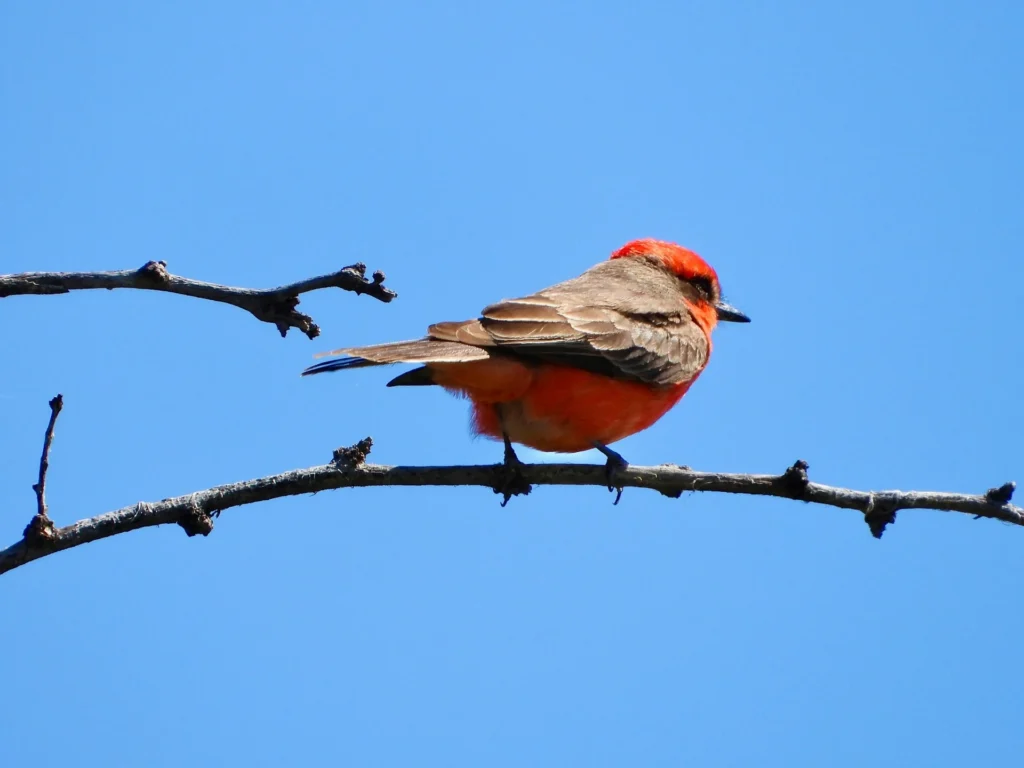
Appearance
The male Vermilion Flycatcher is a fiery burst of color—his vibrant red crown, face, and underparts contrast sharply with a sooty brown back, wings, and tail. Though smaller and slimmer than a cardinal, his bright red plumage might cause a moment of confusion. Females look quite different, with peachy or buff bellies and grayish-brown upperparts, resembling a toned-down cardinal from a distance.
Habitat
These striking birds thrive in open woodlands, scrublands, desert edges, parks, and ranchlands across the southwestern United States, Mexico, and parts of Central and South America. They often perch visibly on fences or low branches.
Diet
Vermilion Flycatchers are insect specialists. They catch flies, beetles, and other flying insects on the wing using a classic “sallying” technique—darting out from a perch to snatch prey midair. Occasionally, they supplement their diet with berries or seeds.
Behavior
These flycatchers are animated and acrobatic. Males often perform courtship flights with fluttering wings and chirpy songs. They’re highly territorial during the breeding season and frequently return to the same perches day after day.
Song
Their song is a rapid, chattery series of chips and whistles, not as melodious as a cardinal’s but still cheerful and persistent. Males sing more during courtship and early morning hours.
Nesting
Females build a small, compact nest on horizontal branches or forks of trees. They lay 2–4 speckled eggs, and while the female incubates, the male often feeds her or stands guard nearby.
Conservation
Populations are generally stable, although habitat loss in parts of their range can pose localized threats. Their vivid color and insect-eating habits make them a welcome sight in natural and suburban areas alike.
Also Read : 15 Birds Found in Arizona Desert
Summer Tanager (Male & Female)
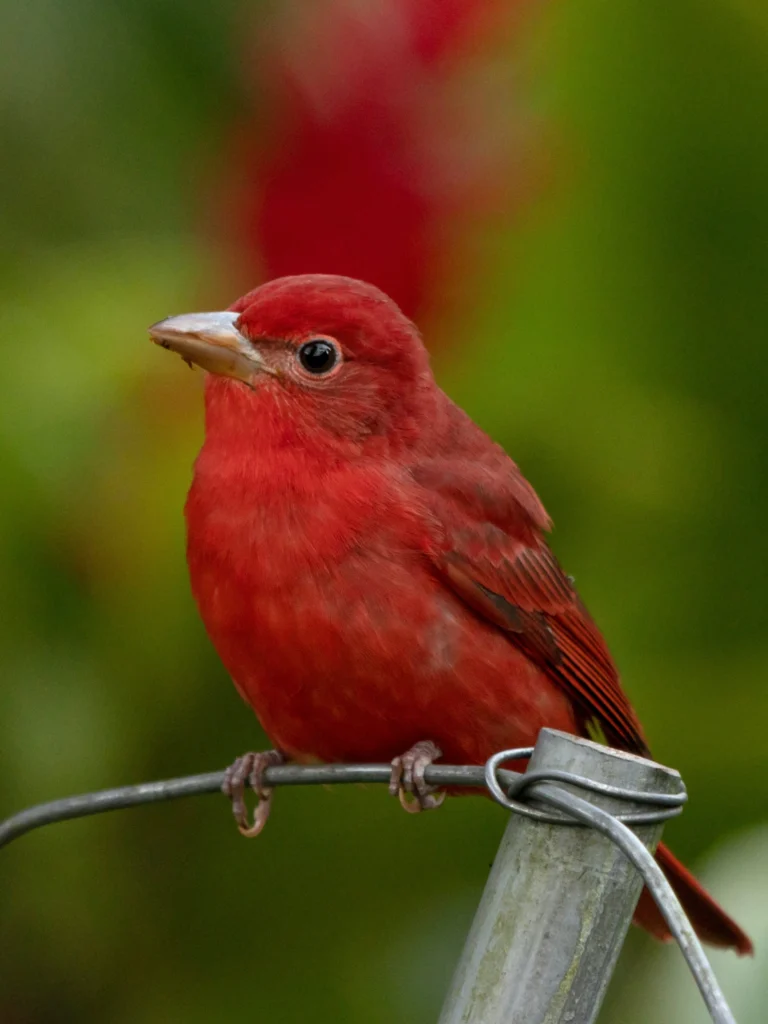
Appearance
The male Summer Tanager is often mistaken for a cardinal due to his rich red color—but unlike the Northern Cardinal, he lacks a crest and has a slimmer, sleeker build. His red is more uniform and slightly rosier. The female Summer Tanager, on the other hand, is yellow to yellow-orange, which can cause her to be confused with juvenile cardinals or other songbirds.
Habitat
Summer Tanagers breed in deciduous and mixed woodlands, especially in the southeastern United States. They prefer areas with tall trees and open canopies, such as river edges, oak forests, and pine woodlands. During winter, they migrate to Central and South America.
Diet
They feed heavily on insects—especially bees and wasps. Summer Tanagers are known for catching wasps mid-air, removing their stingers by rubbing them on branches, and then eating them. They also eat berries and fruits, particularly during migration.
Behavior
These birds are quiet and stealthy compared to cardinals. They tend to stay in the treetops and may go unnoticed unless you’re looking carefully. Males sing to defend territories, and both sexes forage methodically among leaves and branches.
Song
The male’s song is a series of melodic whistles, very similar to an American Robin’s but more fluid and less sharp than a cardinal’s. Their call notes include a soft “pik-i-tuk” sound, often heard during foraging.
Nesting
The female builds a cup-shaped nest in a horizontal tree branch. She lays 3–4 pale blue or greenish eggs and incubates them while the male sings and forages nearby. After hatching, both parents feed the chicks.
Conservation
Summer Tanagers are doing well overall, although habitat loss in both breeding and wintering grounds can pose challenges. They’re welcome visitors in backyards with native trees and fruiting plants.
Also Read : Brown Birds in Arizona: 15 Subtle Yet Stunning Desert Species to Know
Scarlet Tanager
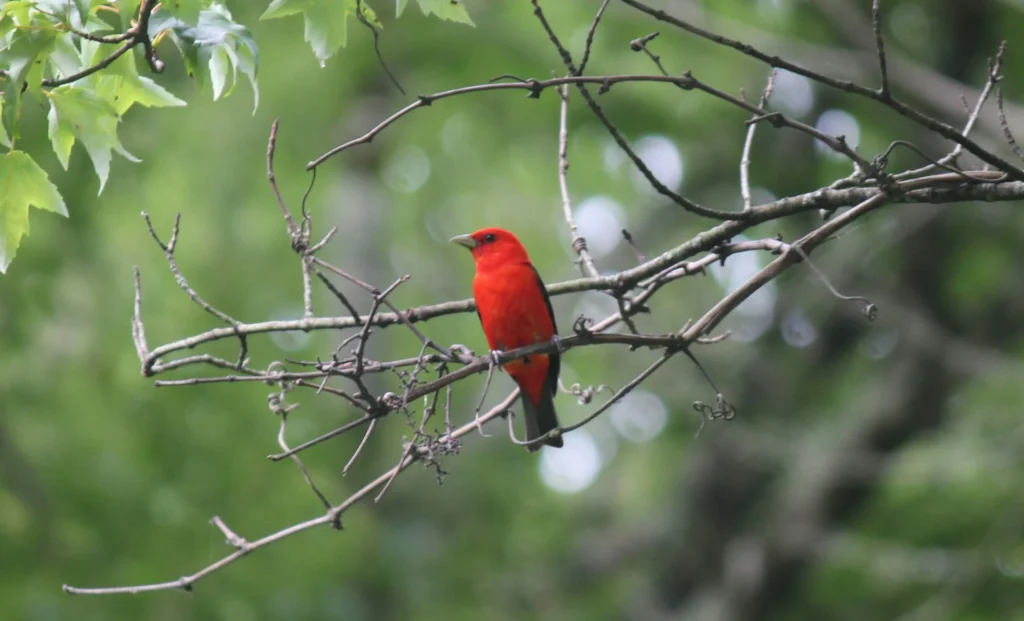
Appearance
Male Scarlet Tanagers are breathtaking, with brilliant scarlet-red bodies and stark black wings and tails—a dramatic contrast to the uniform red of male Northern Cardinals. They lack the cardinal’s crest and have a more compact, rounded body. Females look entirely different, sporting olive-yellow plumage with darker wings, making them easy to confuse with other songbirds or even juvenile cardinals.
Habitat
Scarlet Tanagers prefer mature deciduous and mixed forests, especially in the northeastern and central United States. They spend most of their time high in the tree canopy and migrate to the Amazon Basin in South America during winter.
Diet
Their diet includes insects, spiders, and fruit. They forage actively in the treetops, snapping up flying insects or plucking berries from branches. They’re known to visit fruiting trees in summer and fall.
Behavior
Scarlet Tanagers are secretive and spend much of their time hidden in the leafy canopy. Males sing boldly during the breeding season to attract mates and defend territory, while females remain quieter and more camouflaged.
Song
The male’s song is a buzzy, robin-like series of phrases, often described as a “robin with a sore throat.” It’s less musical than a cardinal’s song but still easily identifiable with practice. Their sharp “chip-burr” call is often heard during flight or when alarmed.
Nesting
Females build loosely woven nests on horizontal branches of deciduous trees. They typically lay 3–5 pale eggs with dark speckling. Males often stay nearby while the female incubates.
Conservation
Scarlet Tanagers face threats from forest fragmentation and collisions during migration. However, their population remains stable. Planting native trees and preserving mature forests can support their breeding success.
Also Read : Orange Birds in Arizona: A Colorful Birdwatcher’s Guide
Hepatic Tanager
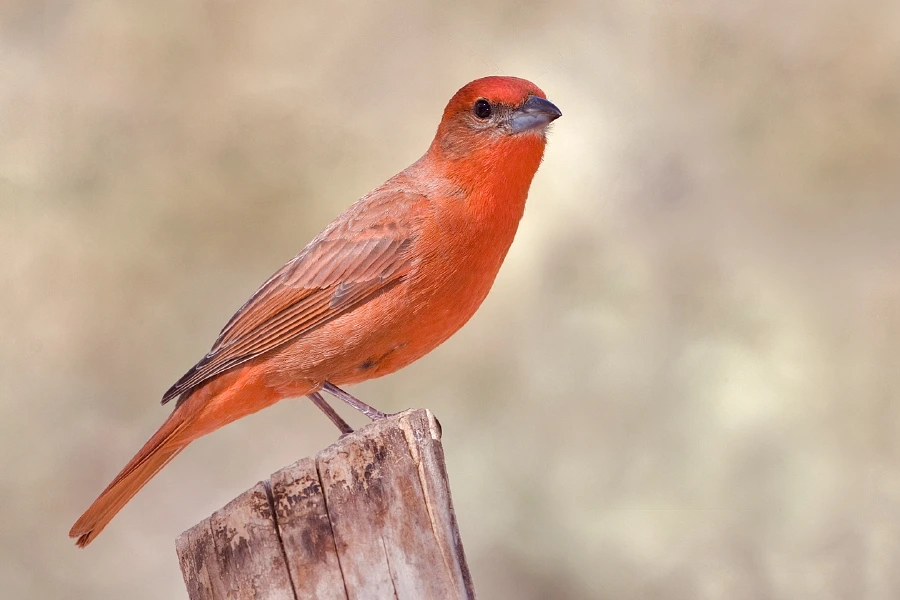
Appearance
The male Hepatic Tanager has a dusky red or brick-red body, noticeably duller than the vivid red of a Northern Cardinal or Scarlet Tanager. His wings and back have a grayish or liver-colored tone (hence the name “hepatic”). Females and juveniles are yellowish-olive with rusty tinges, and may resemble female cardinals from a distance. Like other tanagers, they lack a crest and have a stout, slightly hooked bill.
Habitat
Hepatic Tanagers are found in montane pine-oak forests and woodlands of the southwestern U.S., Mexico, and Central America. They prefer higher elevations and are less common in suburban areas.
Diet
Their diet includes insects, spiders, berries, and small fruits. They forage slowly and methodically in trees and shrubs, often working in pairs or small family groups during the breeding season.
Behavior
These birds are deliberate and quiet, often foraging out of sight in the mid to upper canopy. They may join mixed flocks outside the breeding season and can be difficult to spot unless you’re actively scanning tree branches.
Song
Their song is a series of slow, slurred warbles, similar to the Summer Tanager but with a deeper, more nasal tone. Their calls include a low, dry “chup” sound, often heard while foraging.
Nesting
The female constructs a cup-shaped nest in trees or large shrubs. She lays 2–4 pale, speckled eggs and incubates them while the male stands guard. After hatching, both parents help feed the chicks.
Conservation
Hepatic Tanagers have a relatively stable population, though habitat loss in mountainous areas may affect their range. They’re rarely seen at feeders but can be attracted with native plants and berry-producing shrubs.
Phainopepla

Appearance
The Phainopepla (pronounced fay-no-PEP-la) is a sleek, glossy black songbird with a tall crest, often mistaken for a cardinal from afar due to its crest, slim silhouette, and upright posture. Males are iridescent black with bright red eyes and a tall feathered crest. Females are soft gray with the same crest and red eyes. Both sexes flash white wing patches in flight—something cardinals do not have.
Habitat
Phainopeplas inhabit desert washes, arid woodlands, and chaparral across the Southwestern U.S. and Mexico. They’re particularly drawn to areas with mistletoe, their favorite food source. You might spot them perching atop shrubs or trees, especially in places like Arizona, California, and New Mexico.
Diet
Their diet consists mainly of mistletoe berries, which they consume in large quantities, but they also eat other fruits and catch insects in flight. They are known for regurgitating mistletoe seeds and helping spread the plant across desert environments.
Behavior
Phainopeplas are often seen perching high with their crest raised, keeping watch over their territory. They’re fairly solitary, though pairs form strong seasonal bonds. Males often return to the same perch repeatedly and are very vocal during the breeding season.
Song
They have a wide variety of whistles, warbles, and imitations, sometimes mimicking other desert birds like scrub-jays or cardinals. Their song is often quiet but intricate, and they may call with a sharp “wurp” or “chew.”
Nesting
Unusually, they may nest twice a year in different habitats—deserts in early spring and oak woodlands in summer. Nests are small cups placed in tree forks or shrubs, with both parents sharing duties of incubation and chick-rearing.
Conservation
Phainopeplas are not considered threatened but may be sensitive to changes in desert plant communities and mistletoe availability. They are fascinating desert specialists that bring a cardinal-like flair to the arid southwest.
Cedar Waxwing
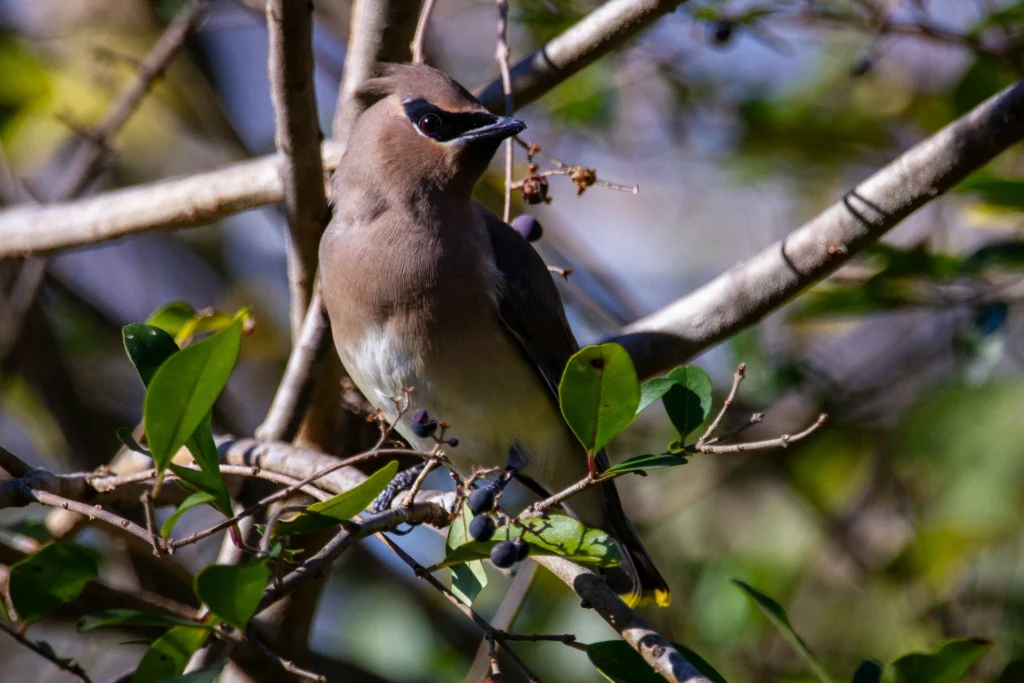
Appearance
The Cedar Waxwing may not be red like a cardinal, but its elegant crest, silky feathers, and black facial mask can easily confuse casual observers. This bird has a smooth, pale brown head and chest, blending into soft gray wings and a lemon-yellow belly. The tail is tipped with a neat yellow band, and mature birds have waxy red tips on their wing feathers, giving them their name.
Habitat
Cedar Waxwings are found across North America, often in woodlands, orchards, parks, and residential areas with fruiting trees. They’re especially visible in fall and winter when they travel in large flocks to feast on berries.
Diet
Their diet is almost entirely fruit-based, making them unique among North American songbirds. They devour berries from trees like juniper, dogwood, serviceberry, and cedar. In summer, they’ll also eat insects, especially when feeding young.
Behavior
Cedar Waxwings are extremely social and gentle, often seen perching shoulder to shoulder in tight-knit groups. They even pass berries to one another during courtship. Despite their cardinal-like crest, they move in flocks rather than holding territories like cardinals.
Song
Their vocalizations are soft, high-pitched trills and whistles, often described as a “sreee” or “seee” sound. Unlike cardinals, they do not sing melodically and are more likely to be heard as a background chorus.
Nesting
Females build cup-shaped nests in tree branches using twigs, grasses, and moss. They lay 2–5 eggs, and both parents feed the chicks. These birds often nest later in the season to coincide with the ripening of summer berries.
Conservation
Cedar Waxwings are widespread and thriving. They benefit from urban and suburban plantings of fruiting trees and bushes. However, they are vulnerable to fermenting berries, which can cause temporary intoxication or collisions with windows.
House Finch (Male)

Appearance
The male House Finch features a rosy-red head, chest, and rump, which can resemble a dull Northern Cardinal at a glance. However, he lacks the cardinal’s crest and has streaky brownish-gray wings and flanks. The red coloring varies by diet—some males appear more orange or even yellow. Females are entirely streaky brown and gray, without any red, often confused with juvenile cardinals or sparrows.
Habitat
House Finches are highly adaptable and common across urban, suburban, and rural environments throughout the United States and southern Canada. You’ll find them in backyards, parks, farms, deserts, and city centers alike.
Diet
They primarily eat seeds, grains, buds, and fruits. At feeders, they’re frequent visitors for sunflower seeds and millet. Unlike cardinals, they have a slightly more slender bill, suited for cracking smaller seeds.
Behavior
House Finches are gregarious and social, often found in flocks. Males sing from treetops or wires to defend small territories, but they are not as territorial as cardinals. They’re very accustomed to human presence and will readily nest near homes or on porches.
Song
The male’s song is a bright, warbling series of chirps and trills, often described as cheerful and jumbled. It differs from a cardinal’s whistled phrases but is quite musical in its own right.
Nesting
They build messy, cup-shaped nests in a variety of locations: tree branches, hanging planters, vents, ledges, and light fixtures. Females typically lay 2–6 pale blue eggs. House Finches often raise multiple broods in one season.
Conservation
Once native only to the western U.S., House Finches now thrive across the East Coast too. They’re one of North America’s most successful urban birds. However, they can suffer from eye disease (Mycoplasma), which spreads at feeders—clean feeders regularly to help prevent outbreaks.
Red Crossbill

Appearance
The male Red Crossbill sports a deep red to reddish-orange body with brownish wings and tail, often drawing comparisons to male cardinals. The most striking feature, though, is its unique crossed bill tips, specially adapted to pry open conifer cones. Males vary widely in color—from bright red to rusty or yellowish depending on age and diet. Females and juveniles are olive-gray to yellowish, with subtle streaking and the same distinctive bill.
Habitat
Red Crossbills inhabit coniferous forests across North America, especially where pine, spruce, or fir trees are abundant. Their range is nomadic, and they may show up unexpectedly in parks, cemeteries, or feeders during cone crop failures elsewhere.
Diet
These birds feed almost exclusively on conifer seeds. Their crossed bills are ideal for prying apart scales of pine cones to extract seeds. They also eat sunflower seeds, weed seeds, and occasionally insects during nesting.
Behavior
Red Crossbills are highly mobile and irregular in movement, traveling great distances in search of cone crops. They forage in flocks and may hang upside-down from branches to access cones. They are less territorial than cardinals and nest opportunistically when food is abundant—even in winter.
Song
Their song is a series of short, warbling notes and varied trills, less musical than a cardinal’s. They give frequent “jip-jip” or “kip-kip” flight calls that help keep flocks together.
Nesting
Unusual among songbirds, Red Crossbills may nest in mid-winter if cone crops are good. Nests are built in conifers, where females lay 2–5 bluish-white, spotted eggs. Both parents feed the chicks with regurgitated seeds.
Conservation
Red Crossbills are not considered threatened, but some subspecies have limited ranges and may face habitat-specific risks. Their nomadic lifestyle makes them hard to monitor, but they remain a fascinating, cone-loving cousin to cardinal fans.
Northern Flicker

Appearance
The Red-shafted Northern Flicker is a large woodpecker with a unique appearance that can occasionally be confused with a cardinal—especially in flight. While overall tan or grayish-brown, this flicker has bold red underwings and undertail feathers that flash brightly when flying. Males also have a red “mustache” mark on the face. Their spotted bellies, barred backs, and black crescent bib help distinguish them from cardinals on closer look.
Habitat
These birds thrive in a wide variety of open habitats, including woodlands, forest edges, parks, deserts, and suburban areas across western North America. They are often seen foraging on the ground, unlike most other woodpeckers.
Diet
Northern Flickers primarily eat ants and beetles, which they dig from the soil using their long, barbed tongues. They also enjoy berries, fruits, and seeds, especially in winter. You might spot them at suet feeders or probing lawns for insects.
Behavior
Unusual for a woodpecker, flickers often spend time on the ground. They perch on tree trunks, fences, and power lines but are just as likely to be seen hopping across your yard. They’re strong fliers with undulating flight patterns and distinctive red flashes under their wings.
Song
Flickers produce a loud, repeating “kleer” call and a series of rhythmic “wicka-wicka” notes. Their drumming on hollow trees, metal poles, or chimneys is often part of their territorial display.
Nesting
They excavate cavity nests in dead trees, wooden poles, or even buildings. Both sexes participate in nest-building and incubation, typically laying 5–8 white eggs. Flickers may reuse or expand old nesting sites year after year.
Conservation
Northern Flickers are widespread but face challenges from habitat loss and competition for nesting cavities. They’re still common backyard visitors and can be encouraged with dead trees, nest boxes, and ant-rich lawns.
Rose-breasted Grosbeak (Male)
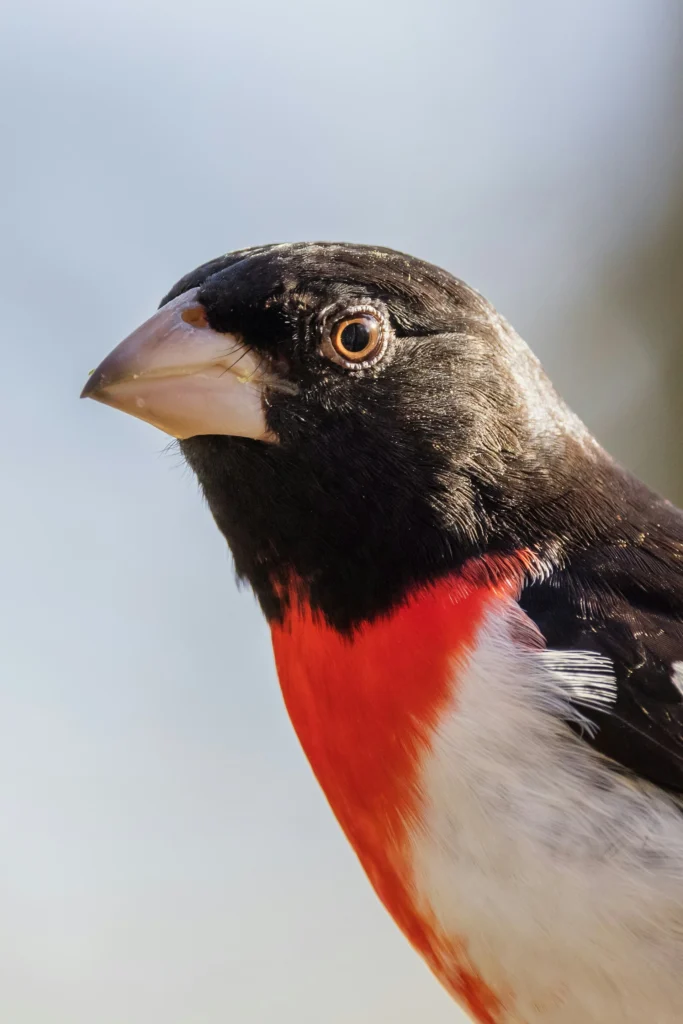
Appearance
The male Rose-breasted Grosbeak is an eye-catching bird with a black head and back, white underparts, and a vivid triangular red patch on the chest. From a distance, this bold splash of red can remind birders of a cardinal. Both males and females have a large, conical, pale bill similar to a cardinal’s. Females, however, are streaky brown with white eyebrow stripes, resembling oversized sparrows rather than cardinals.
Habitat
These grosbeaks prefer deciduous and mixed forests, often near clearings, edges, and riversides. During migration, they’re frequent visitors to backyard feeders and gardens across much of the eastern and central United States.
Diet
Their diet is varied, consisting of insects, seeds, and fruits. In summer, they eat beetles, caterpillars, and grasshoppers, while in fall and spring, they switch to berries and seeds. At feeders, they enjoy sunflower seeds and occasionally suet.
Behavior
Rose-breasted Grosbeaks are relatively shy and deliberate in their movements, preferring leafy cover while foraging. Males sing persistently during breeding season, while females may respond with softer versions of the song.
Song
Their song is a sweet, melodious warble, often compared to a robin’s but more fluid and musical. The male’s song is one of the most beautiful in North American woodlands. Their sharp “chink” call note is also distinctive.
Nesting
Females build loosely constructed cup nests in trees or shrubs, typically 5–15 feet above ground. They lay 3–5 pale greenish-blue eggs with darker speckles. Interestingly, both parents share equally in incubation and chick-rearing duties.
Conservation
Rose-breasted Grosbeaks are fairly common but face pressures from habitat loss and collisions with windows during migration. They remain widespread and are considered a beloved backyard visitor for their beauty and song.
Blue Grosbeak (Female)
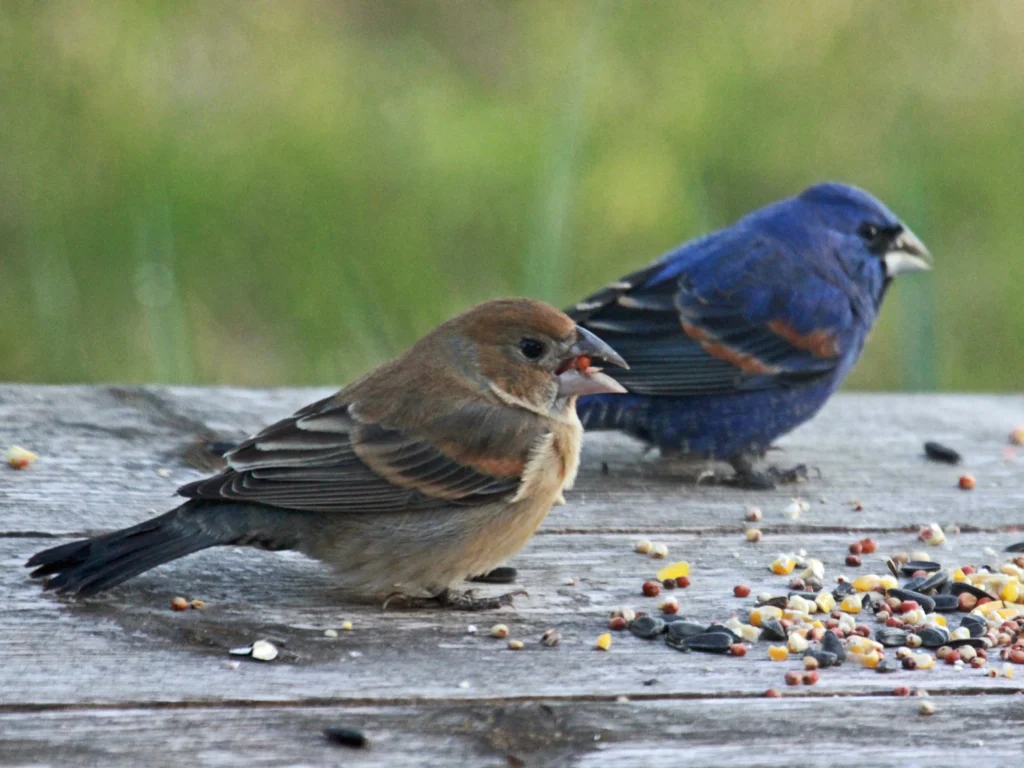
Appearance
While the male Blue Grosbeak is a stunning deep blue with chestnut wing bars, it’s the female that often draws comparisons to cardinals. She has a warm brown or cinnamon-colored body with touches of blue on the wings and tail. Like the Northern Cardinal, she has a large, conical bill and similar body shape, though she lacks a crest. At a glance, her rich coloring and posture can easily lead to confusion with a female cardinal.
Habitat
Blue Grosbeaks prefer brushy fields, forest edges, overgrown pastures, and shrubby roadways across the southern and central United States. They often nest in dense vegetation near open areas and are most visible during the breeding season.
Diet
Their diet includes a mix of insects, seeds, and grains. They forage low in shrubs or on the ground and will occasionally visit feeders stocked with sunflower seeds or millet.
Behavior
Blue Grosbeaks are relatively secretive and shy, often staying hidden in thick shrubs. Males sing from exposed perches, while females stay closer to the nest. They are territorial during breeding but often migrate in mixed flocks.
Song
Males sing a rich, musical warble, similar to an Indigo Bunting but slower and more deliberate. Their call note is a soft “chink” or metallic “tink,” which can be heard as they move through cover.
Nesting
The female builds a nest low in dense vegetation, usually no more than 6 feet off the ground. She lays 3–5 pale blue eggs and incubates them alone. Males may feed the female during nesting and help raise the young once they hatch.
Conservation
Blue Grosbeaks are expanding their range northward and are not currently threatened. Providing brushy native plants and seed sources can help attract them to suitable habitats.
Black-crested Titmouse
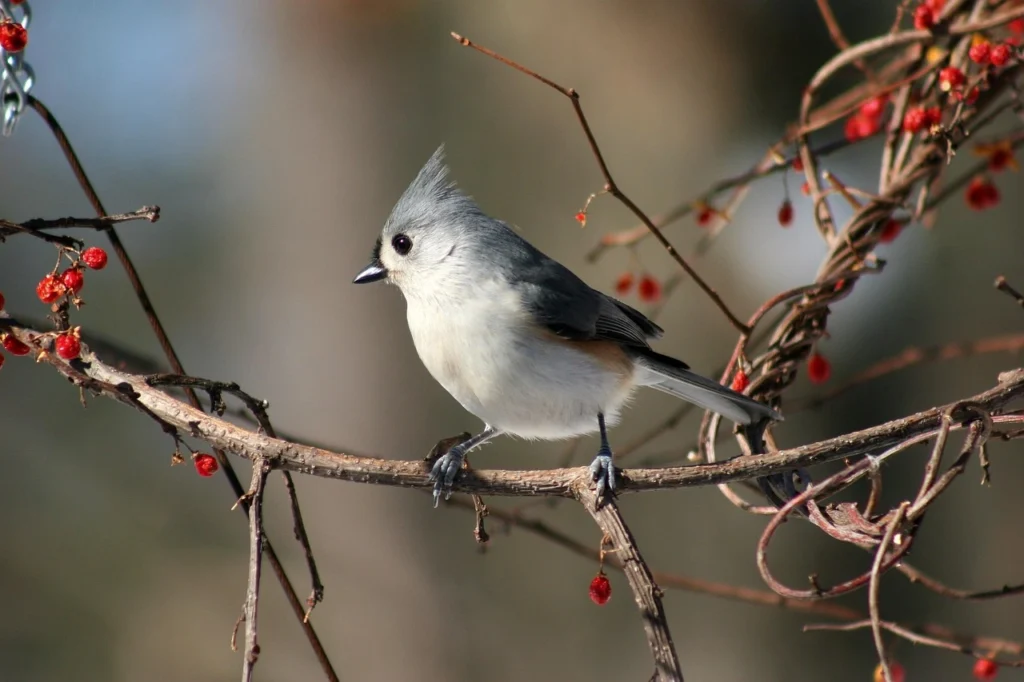
Appearance
The Black-crested Titmouse is a petite, gray songbird with a bold black crest and white face, giving it a cardinal-like profile—especially from a distance. Unlike Northern Cardinals, it lacks red coloring entirely, but its crest and upright posture lead many to mistake it for a juvenile or female cardinal. Its underparts are pale gray, sometimes with a slight buff wash on the flanks.
Habitat
This species is primarily found in central and southern Texas and northeastern Mexico, especially in oak woodlands, mesquite brushlands, and suburban neighborhoods with plenty of trees.
Diet
Black-crested Titmice feed on a combination of insects, seeds, berries, and nuts. They’re agile foragers, often seen hanging upside-down to pluck food. At feeders, they readily eat sunflower seeds, suet, and peanuts.
Behavior
They are inquisitive, active, and often travel in mixed flocks with chickadees and woodpeckers. These titmice cache food in bark crevices and will readily explore bird feeders and even windowsills. Their fluttery, fast movements differ from the more deliberate posture of cardinals.
Song
Their vocalizations are sharp and whistled, usually a repeated “peter-peter-peter” or high-pitched “see-see-see.” While not musical like a cardinal, their song carries well through wooded areas.
Nesting
They are cavity nesters, using natural tree holes or nest boxes. Females lay 5–7 speckled eggs in a cozy, down-lined cup. Both parents feed the chicks, and the species readily adapts to nest boxes in urban areas.
Conservation
The Black-crested Titmouse has a stable and healthy population. It’s closely related to the Tufted Titmouse, with which it hybridizes in overlapping zones. Providing nest boxes and keeping feeders stocked helps support this friendly, crest-bearing bird.
Bohemian Waxwing
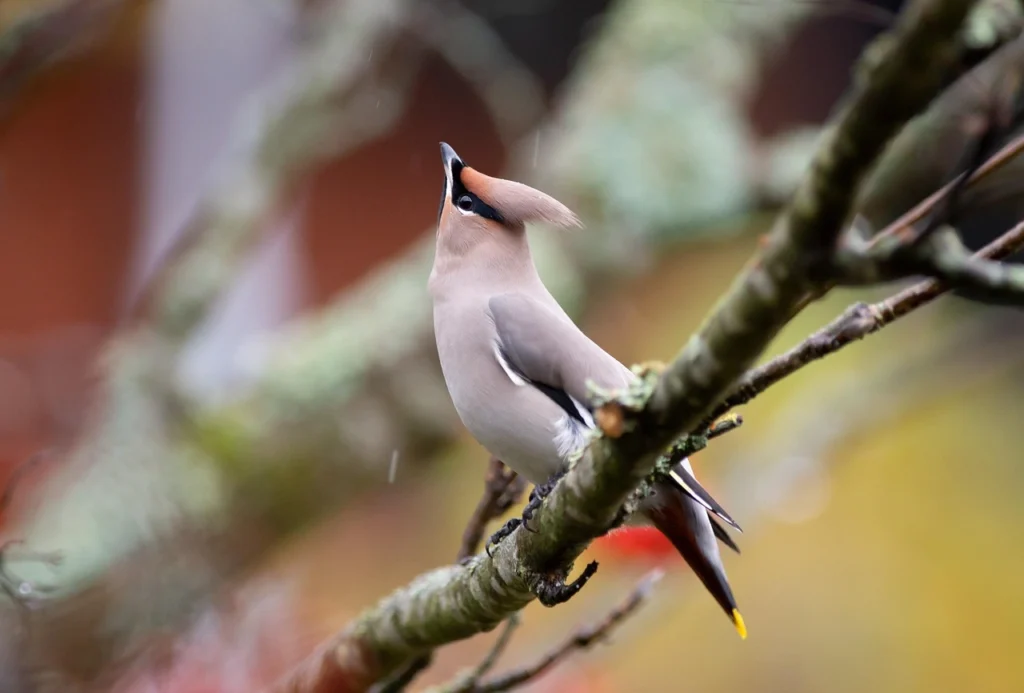
Appearance
The Bohemian Waxwing is a sleek, silky bird with a soft gray-brown body, a pointed crest, and a striking black mask—all features that echo the Northern Cardinal’s silhouette. While it lacks the bright red coloration, its red-tipped wing feathers, yellow tail band, and rufous undertail give it a colorful, regal look. It’s slightly larger and more robust than the closely related Cedar Waxwing.
Habitat
Bohemian Waxwings breed in boreal forests across the far north of Canada, Alaska, and Eurasia, but in winter they move south into the northern U.S., especially the Northwest and Great Lakes regions, where they seek out fruiting trees and shrubs.
Diet
Their diet is heavily fruit-based. In winter, they form large flocks and feast on berries from mountain ash, juniper, crabapple, dogwood, and cedar trees. In summer, they’ll eat insects, especially during nesting.
Behavior
Bohemian Waxwings are highly gregarious, often forming tight flocks that move in unison from tree to tree. They are gentle and non-territorial, often mixing peacefully with other berry-loving species. Their graceful movements and clean plumage make them seem almost royal.
Song
Their call is a high-pitched, thin trill or “tseee” that sounds more like a hiss than a whistle. They are generally quiet birds, especially when compared to vocal songbirds like cardinals.
Nesting
Nesting occurs in remote northern conifer forests. The female builds a cup-shaped nest high in trees and lays 3–6 pale blue, speckled eggs. Both parents participate in feeding the young once hatched.
Conservation
Bohemian Waxwings have stable populations but are sensitive to berry crop failures and habitat changes. Because they move nomadically in winter, their presence can be unpredictable but thrilling for birders lucky enough to spot them.
Conclusion: More Than Just a Red Bird
The Northern Cardinal may be one of the most recognizable birds in North America, but it’s far from the only one with eye-catching colors, crested heads, or melodic songs. From the dusty-red Pyrrhuloxia of the Southwest to the raspberry-toned Purple Finch and the flashy Vermilion Flycatcher, many species share similar traits that can cause birdwatchers to take a second look.
Whether you’re spotting birds in your backyard or out on a woodland trail, these cardinal look-alikes add rich variety and surprises to the birding experience. Learning their subtle differences—in shape, behavior, song, and color tone—enhances your connection to nature and helps you appreciate just how wonderfully diverse our feathered world really is.

Welcome to World Birds Life, where the wonder of birds takes center stage. My name is Lexi, and I’m passionate about helping you discover the beauty and joy that birds bring into our lives.

